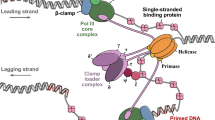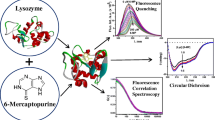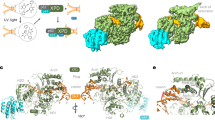Abstract.
Modifications of natural DNA by the dinuclear platinum(II) organometallic complex [{Pt(Me)Cl(Me2SO)}2(μ-N-N)] [where N-N=H2N(CH2)6NH2] (ORGANObisPt) were studied by methods of molecular biophysics. These methods include DNA binding studies using atomic absorption spectrophotometry, HPLC analysis of enzymatically digested DNA, interstrand cross-linking employing gel electrophoresis under denaturing conditions, DNA unwinding studied by gel electrophoresis, mapping of DNA adducts by transcription assay, DNA melting curves measured by absorption spectrophotometry and conformational analysis of platinated DNA by differential pulse polarography. The results indicate that the complex ORGANObisPt binds irreversibly to DNA. Its DNA binding mode is, however, different from that of the formally equivalent [{cis-PtCl(NH3)2}2(μ-N-N)] (1,1/c,c), which exhibits antitumor activity including that in the tumor cells resistant to cisplatin. Interestingly, ORGANObisPt binds to DNA considerably faster than 1,1/c,c and cisplatin. In addition, when ORGANObisPt binds to DNA it exhibits a strong base sequence specificity to guanine residues. ORGANObisPt forms mainly monofunctional adducts on double-helical DNA. It forms also a small amount of DNA interstrand cross-links (~2%), i.e. a radically smaller amount in comparison with the complex 1,1/c,c. Importantly, these interstrand cross-links of ORGANObisPt are capable of terminating RNA synthesis in vitro, while its major monofunctional adducts are not. In addition, the adducts of ORGANObisPt affect the conformation of DNA, but in a different way than its dinuclear analogue 1,1/c,c or cisplatin. Some structural features of ORGANObisPt, such as the charge or nature of the trans and cis activating groups relative to the labile chloride, might be responsible for the altered DNA binding mode and biological activity in comparison with the 1,1/c,c compound.
Similar content being viewed by others
Author information
Authors and Affiliations
Additional information
Electronic Publication
Rights and permissions
About this article
Cite this article
Marini, V., Kasparkova, J., Novakova, O. et al. Biophysical analysis of natural, double-helical DNA modified by a dinuclear platinum(II) organometallic compound in a cell-free medium. J Biol Inorg Chem 7, 725–734 (2002). https://doi.org/10.1007/s00775-002-0347-1
Received:
Accepted:
Issue Date:
DOI: https://doi.org/10.1007/s00775-002-0347-1




